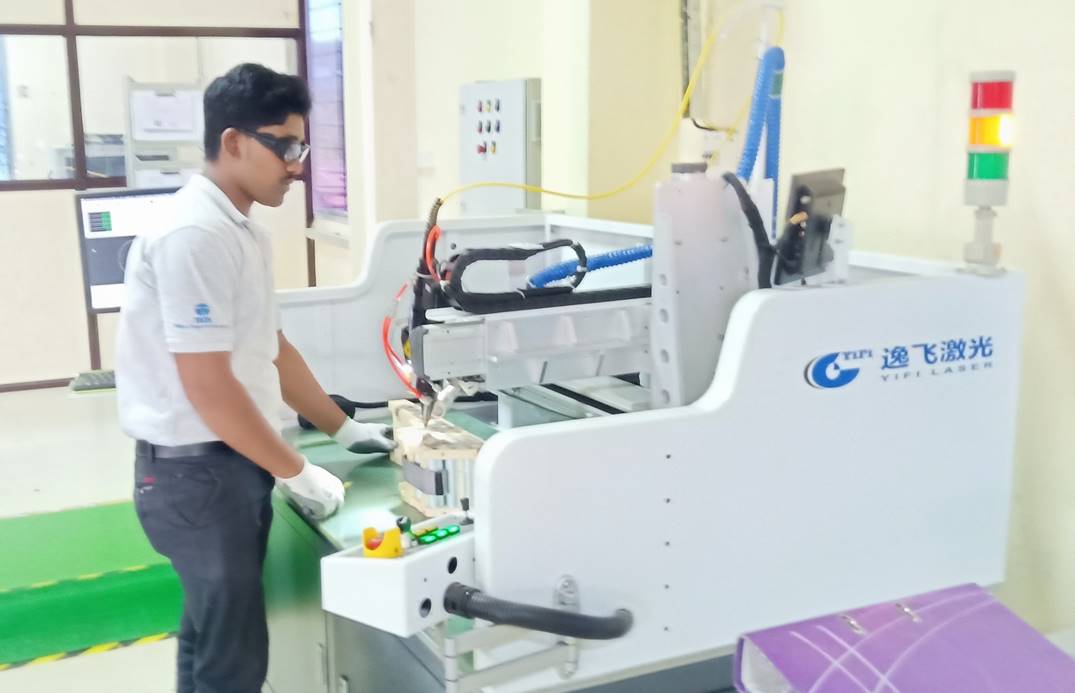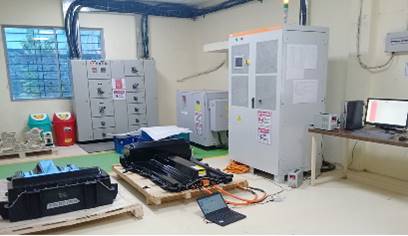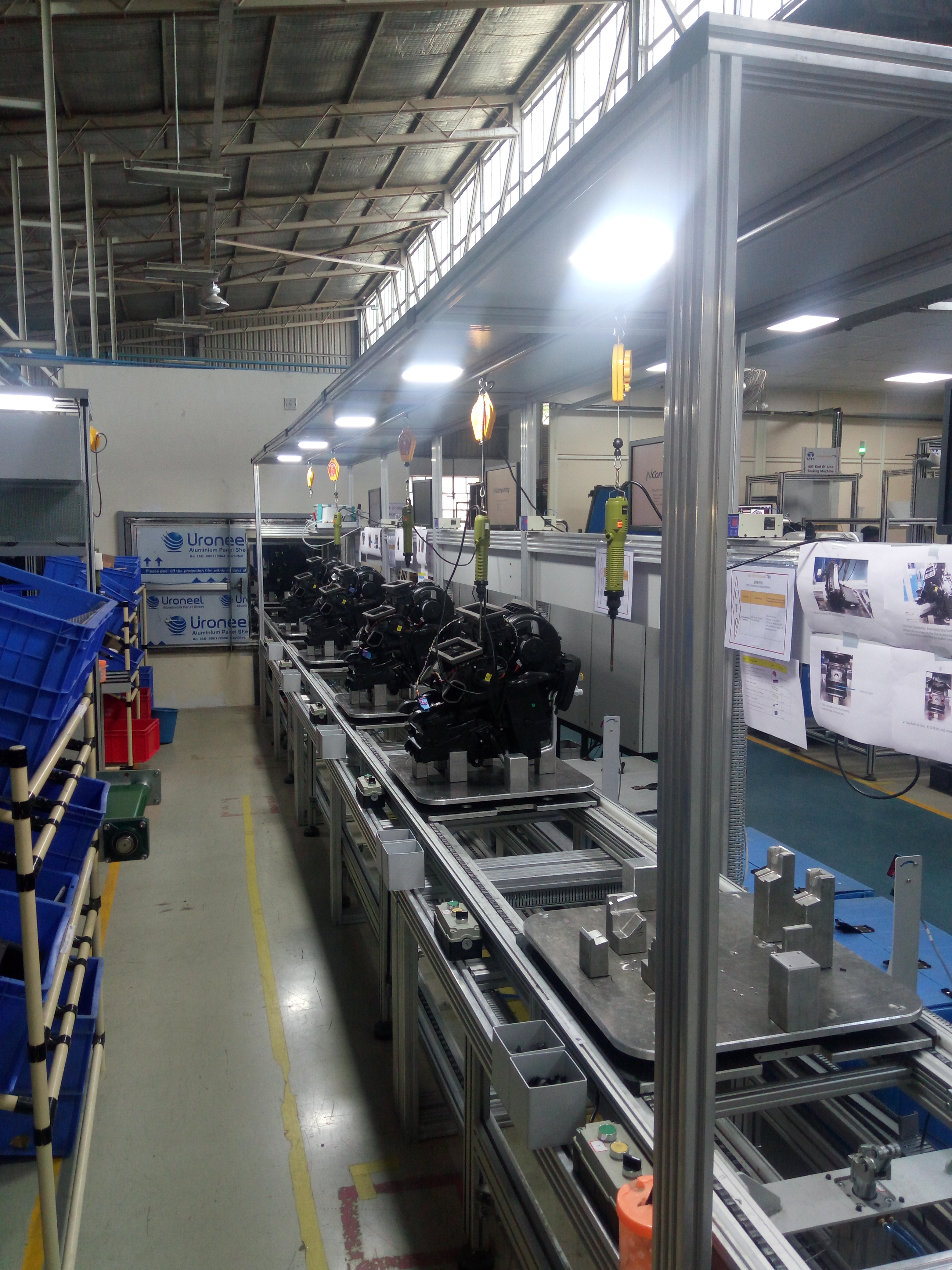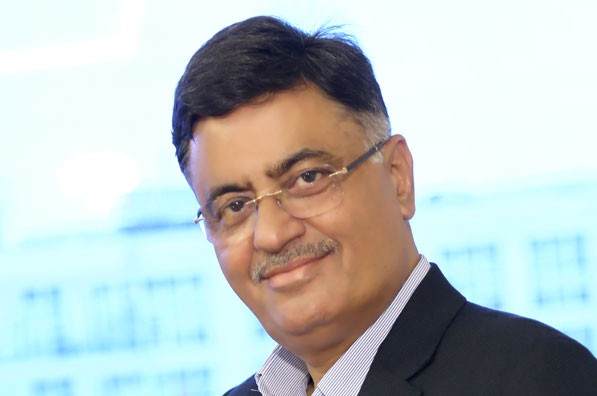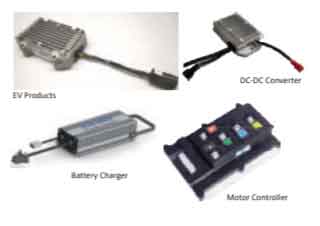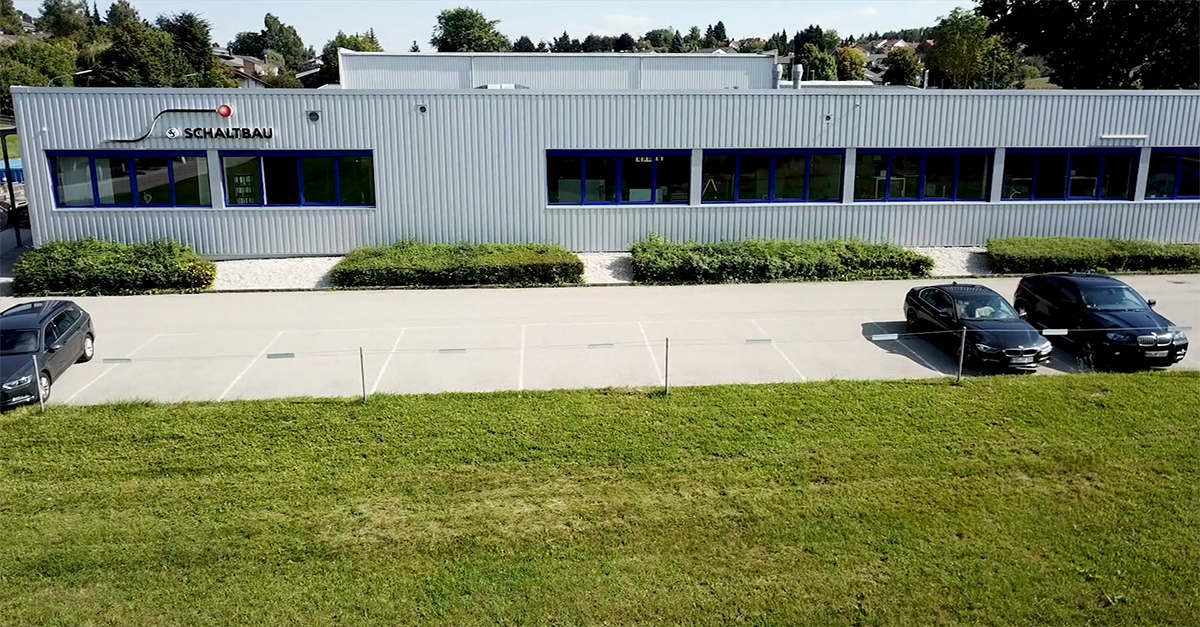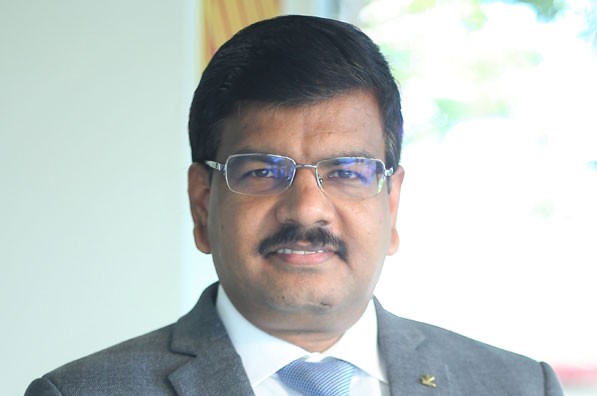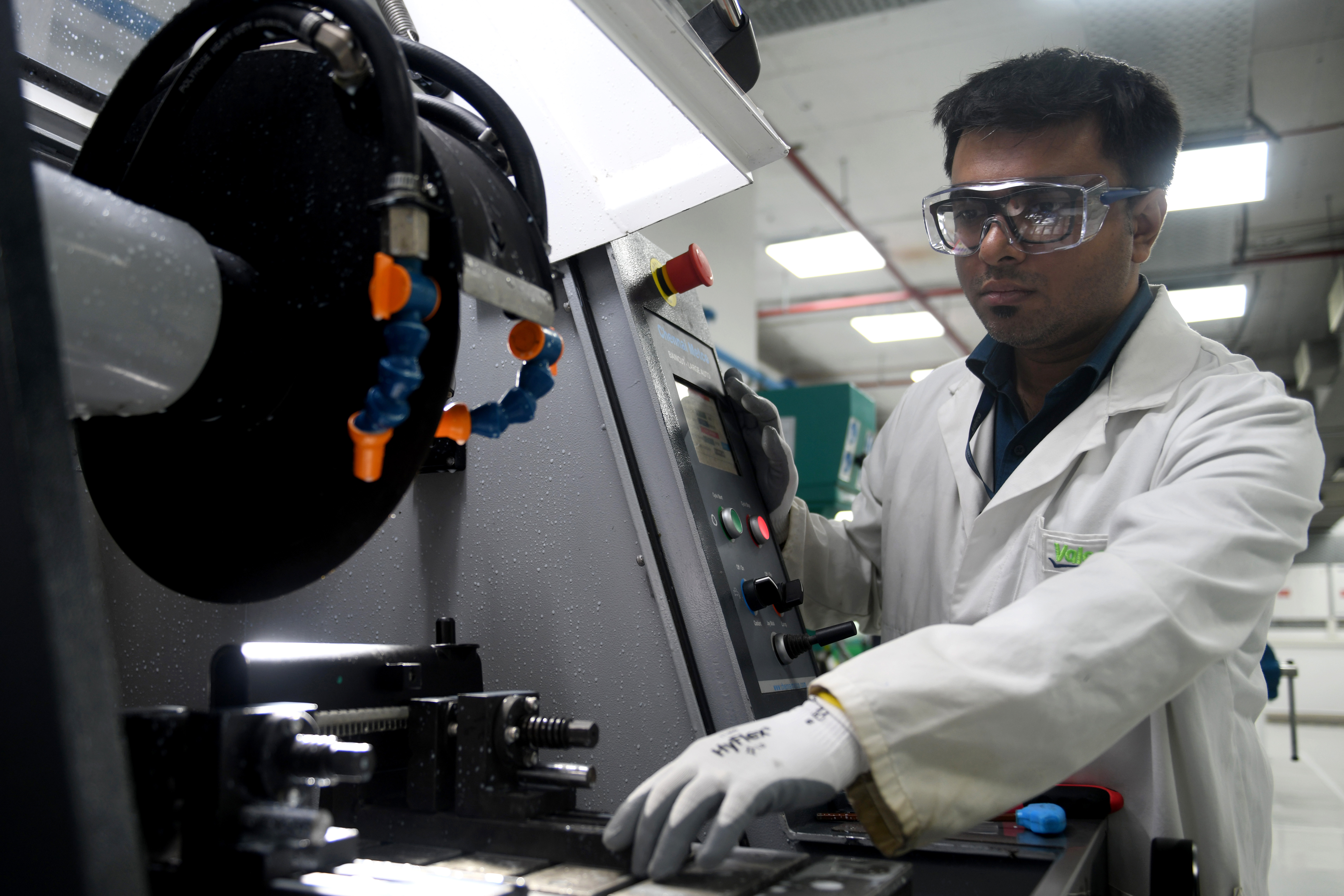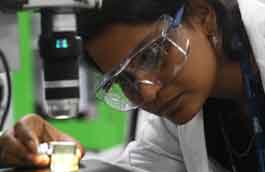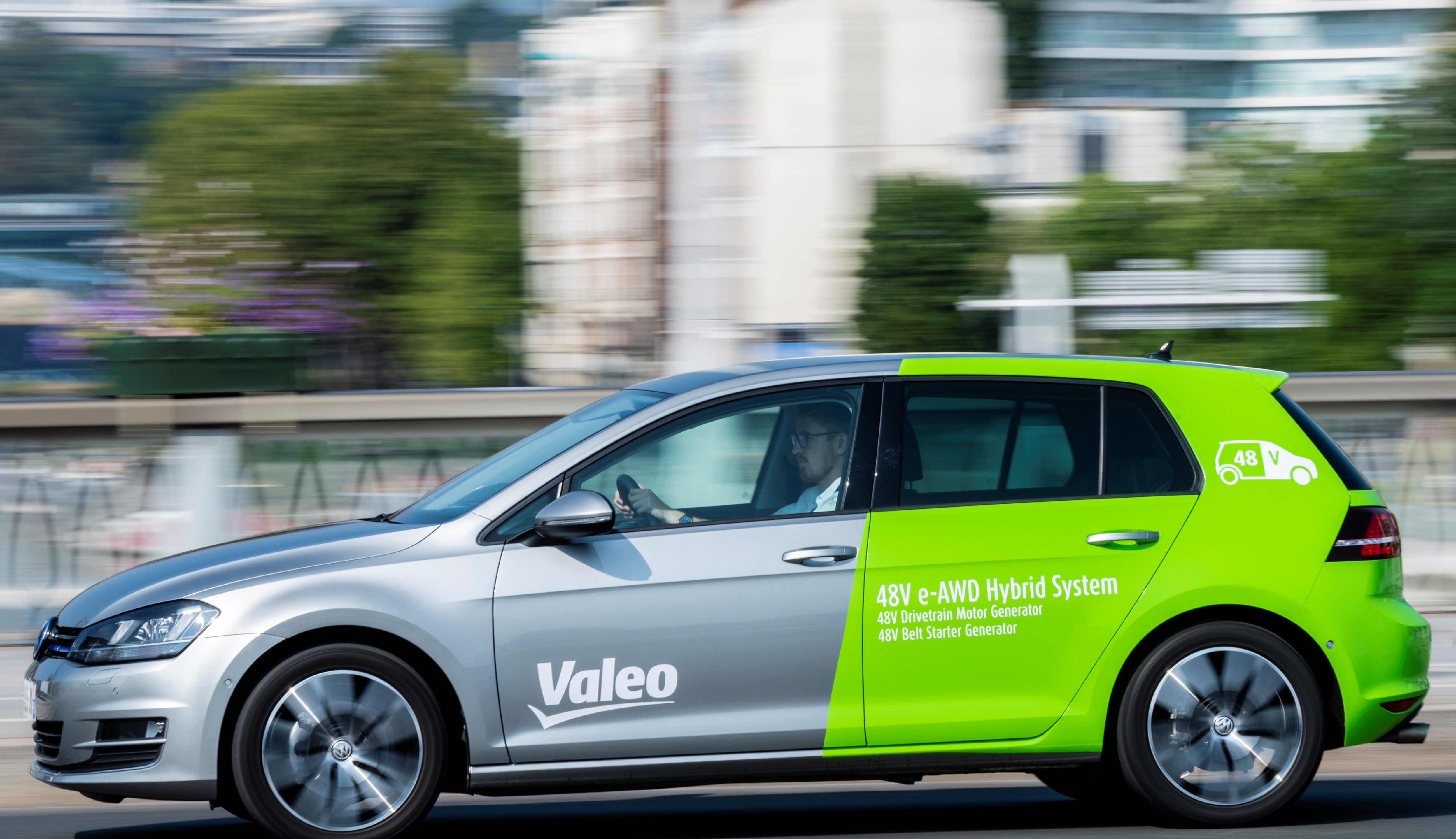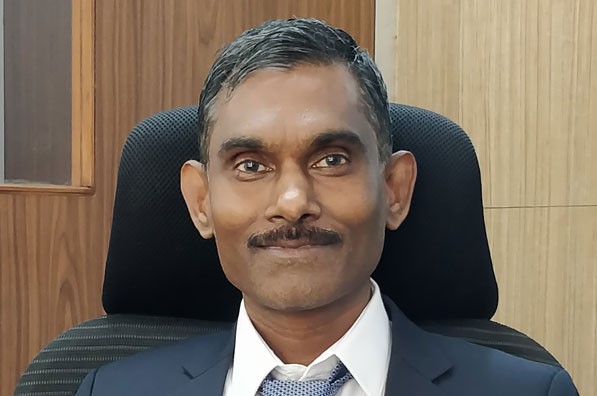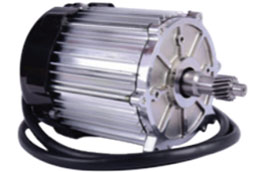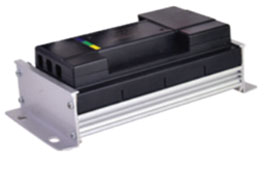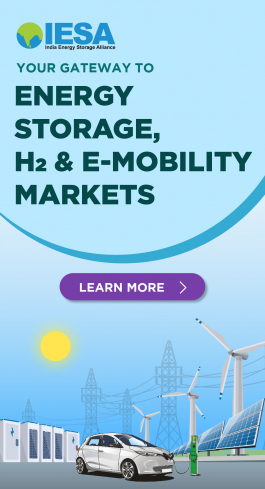New vistas in EV component industry
The electric vehicle market is primed for expansion. In order to thrive in the new order, EV component makers will be required to think of a long-term focused strategy while new entrants will have to overcome substantial barriers.
Electric mobility is rapidly transforming dynamics of the auto-component world. Bloomberg estimates by 2025, EVs will make 10 percent of global passenger vehicle sales, rising to 28 percent in 2030 and 58 percent by 2040.
A surge in EV penetration, therefore, means the need for a whole new approach on the part of EV component makers.
Global EV auto component market
Though at an early stage today, the EV component market is projected to reach a value of $157.4 billion by 2025 from a $22.2 billion market in 2018 – advancing at 29.4 percent CAGR for the forecasted period of 2019-2025. [Source: Markets and Research].
Two of the most significant drivers for the growth of the EV component market have been supportive government policies and progressive decline in the cost of EV components. On the end-user basis, original equipment manufacturers (OEMs) have been the primary growth drivers for the EV component industry compared to aftermarket business -- given that the demand for replacement of various EV parts remains low.
Supportive government policies
Tougher emission targets and supportive policies by the government have created an environment that encourages adoption of EVs. Financial incentives including subsidies, value-added tax (VAT), vehicle registration tax exemption, are some of the main policy measures used to make EVs more affordable at a time when manufacturers struggle due to high up-front cost of EVs.
Further, several countries and cities around the world have set timelines for phasing out the sale of diesel- and gasoline-powered vehicles. For example, Norwegian government spurred EV adoption in the country by generous subsidies and promoting EV use over conventional ones. As early as 2017, Norway had announced it would prohibit domestic sales of new diesel and gasoline-powered cars as of 2025 — the earliest date for any such ban in the world.
In other parts of the world, California (United States), France, and the United Kingdom have announced that they will end sales of internal combustion engine (ICE) vehicles by 2040.
In China, too, generous national and local subsidies for EVs coupled with supportive policies like New Energy Vehicle (NEV) mandate have resulted in a major push to the EV market, encouraging auto producers to produce NEVs and reduce production of fossil-fuel powered vehicles.
Declining cost of the EV components
In conventional vehicles, multiple components of the powertrain make up a significant part of total vehicle cost, whereas in EVs, battery pack along with the battery management software alone accounts for 60-70 percent of the total cost.
While batteries remain a heavily priced component of an EV powertrain, studies suggest, battery prices are expected to fall by more than 30 percent between 2018 and 2025 due to advancement in technology and economies of scale.
Apart from the battery pack, main components of EV powertrain include electric motor, controller, DC-AC converter, on-board charger, DC-DC converter, battery management system (BMS), thermal management system, and body control module.
EV component market in India
While EV penetration has not disrupted the auto component industry in India per se, but legacy auto component manufacturers and new entrants have already started exploring possible opportunities in the e-mobility space.
On the policy-front, the government of India approved the National Mission on Electric Mobility in 2011 and subsequently unveiled the National Electric Mobility Mission Plan 2020 in 2013.
As a part of this mission, the government notified Faster Adoption and Manufacturing of (Hybrid &) Electric Vehicles in India (FAME) scheme - Phase I in 2015. To incentivize adoption and manufacturing of EVs in the country, the government reduced and rationalized basic customs duty and Goods & Services Tax (GST).
The main focus in the first phase of the FAME scheme was to promote e-mobility by: technology development, demand creation, pilot projects and charging infrastructure. Now, in its Phase II, with a total outlay of `10,000 crore, the focus of the scheme is to increase the number of EVs in the commercial fleet.
Last year, to give impetus to indigenous manufacturing to all the components utilized in the supply-chain of manufacturing of EVs, the government launched Phased Manufacturing Programme (PMP). The program establishes a graded customs duty structure for indigenous manufacturing of EV and its parts, over a period of time.
PMP was launched by the government to provide the industry a plan to make necessary investments in capacity to localize the EV value chain.
The Indian government is planning to invest around $4 billion to set up at least four Tesla-style giga factories for battery production. In fact, in May 2020, Finance Minister Nirmala Sitharaman recognized advanced cell battery storage as a 'champion sector' as part of the self-reliant India initiative (Atmanirbhar Bharat Abhiyaan).
The emphasis of this scheme was on promoting cell manufacturing in India and reducing reliance on the import of battery cells. At present, a plan is being chalked out to come up with a suitable 'performance-linked fiscal incentive program' to incentivize advanced cell chemistry (ACC) manufacturing in India.
The above shift in the auto component industry calls for major component makers to adjust their strategy similarly, it calls for several new entrants to overcome substantial barriers.
ETN Magazine spoke to five legacy auto component manufacturers and one new entrant to understand how they are preparing for this transition.
Business overview: Tata AutoComp has invested in creating a wide portfolio to support the electrification of vehicles in India. The industry is at a nascent stage and relies heavily on imports. The volumes need to grow to a level that supports local manufacturing and R&D.
We cover all vehicles segments starting from e-2Ws to passenger vehicles to e-trucks and e-buses. The complexity, size and in some cases, the technology may differ across the segments, but the principles remain common.
EV components manufactured: Our portfolio includes Li-ion battery packs and BMS, battery thermal management, motors, controllers and drivetrain, and battery chargers.
E-mobility strategy: Tata AutoComp has supplied all the components related to the EV drivetrain to Tata Motors, which include the battery pack and BMS, battery thermal management system, motor, controller, inverter, chiller, etc. While initially, most components are imported and assembled in India by us, going forward, the plan is to localize all these components in line with FAME-II policy.
Products and market reach: Our portfolio includes automotive batteries (popularly available as Tata Green Batteries), battery pack and BMS, motors, controllers, inverters and integrated drivetrain.
It also includes interior and exterior plastic parts such as: bumpers, IP, cockpit, air vents, door panels, kinematic plastic parts, etc.; parts made from glass fiber reinforced sheet molded composites like bumpers, steppers, wheel arch, engine hood, battery pack cover; sheet metal components like structural parts, support parts, skin panels and containers; engine cooling solutions like radiators fan motor shroud, EGR coolers, oil coolers, condensers; HVAC solutions including air quality management systems, battery thermal management system, seating systems, exhaust and emission after-treatment solutions; and command systems like inner and outer rear view mirrors, gear shifters, park brake levers, washer systems, parking assistance cameras, and suspension systems.
All these parts are supplied to the Indian market. Many of our business units export components to global OEMs outside India. Also, some OEMs use India as a manufacturing base and the models they make are common across multiple markets. Our components, which are fitted in these models, are hence common for all such markets.
At Tata AutoComp, we have two business units that are located outside India. TitanX, a company we acquired that has plants in Europe, US, Latin America and China, and is a global leader in powertrain cooling solutions for medium- and heavy-trucks. Nanjing Tata AutoComp, located in China, makes kinematic plastic parts. Both these units cater to global customers.
Opportunities and challenges: There are some components that vary significantly between ICE vehicles and EVs - e.g., engine parts, drivetrain and exhaust. These would be replaced/ eliminated in EVs. However, most components which are inside the vehicle e.g., IP and cockpit, seats, HVAC, body parts, etc., will not change. Light weight would be important in every single component which goes into an EV as that has a direct impact on the distance a vehicle can travel per charge. Also, in EVs, some components would see an increased usage e.g., the quantum of electronics and cooling systems would increase multi-fold. Localization effort: We have business units that we own completely. Here the technology is home-grown and the products we offer are 100 percent localized. In the business units where we have JV partners, there is a definite road map towards localization. In most of our JVs we have already achieved very high levels of localization. In a couple of JVs, we are waiting for volumes to reach a critical mass, which would favor localization.
Business overview: Spark Minda Group had announced the establishment of Spark Minda Technical Centre (SMIT) in 2016. This unit will enhance the group's ability in product development and design, to deliver inter-disciplinary products in the EV component business. We have been instrumental in development of stringent quality EV components, which will meet the automotive and EM/EMC norms. OEMs are focusing on achieving higher efficiency and performance in vehicle electrification solutions and seeking innovative products for their upcoming vehicle programs. We have deployed an expert team of power electronics and embedded professionals who are working on various new technology platforms, to cater to the electrification requirements.
EV components manufactured: DC-DC convertor, battery charger, connected clusters, HV wiring harness, keyless entry systems and EV telematics are the primary EV components for e-2Ws and e-3Ws vehicle segments.
E-mobility strategy: With the increase in the penetration of the EVs especially in 2W and 3W space, our focus is on development of power electronics viz., DC-DC converter, battery charger, motor controller, etc. We are also exploring opportunities for a potential joint venture for expanding our product range. We will be localizing the entire value chain right from R&D to manufacturing, basis specific customer requirements. Products and market reach: We cater to all the segments of the automobile industry i.e. 2W, 3W, passenger vehicles, commercial vehicles and off-road vehicles. Minda Corporation focuses on three domains in a vehicle i.e. Safety Security and Restraint System (Mechatronics), Driver Information and Telematics System (Information and Connected Systems), and Interior System (Plastics and Interiors). In Mechatronics Vertical we offer Vehicle Access Systems for all segments like conventional lock set to Advanced Passive Entry Passive Start – keyless entry systems, high-end die casting parts like housing compressor and turbo charger parts, and auto electrical parts for the tractor industry. In the Information and Connected System vertical, we offer connection systems such a wiring harness for all segments, instrument clusters ranging from mechanical to advanced clusters such as LCD, (thin film transistor) TFTbased and connected, various sensors depending on regulations, mega trends and customer needs. In Plastics and Interiors we focus on value added products such as kinematic plastic parts like center console, and light weighting plastic parts like oil pan battery tray, etc. We also offer new technology products based on the mega trends, change in regulations, comfort and convenience, electrification, electronification, light weighting and shared mobility space. Our focus is to provide end-toend solutions and products to our customers in the area we operate in. We have already won orders from OEMs on new technology products such as DC-DC convertor, battery chargers and telematics, to capture the growth. We export mainly to the ASEAN (Association of South East Asian Nations) and European regions and our products go to the ICE, EV and hybrid technology manufacturers.
Opportunities and challenges: The main challenge faced by the autocomponent makers is the low volume of EV due to various factors like cost of ownership, driving range, battery issues and charging infrastructure. Meeting the stringent EV norms presents a formidable challenge. While affordable and customized solutions, specially designed for the local need, will help us succeed.
Localization effort: We are building a world class manufacturing facility for automated assembly of electronic units in Chakan-Pune. We already have established a technical center equipped with stateof-the-art development infra-structure. Localization will enable India to align with global trends in an agile manner delivering frugal engineering solutions to global markets. Building required skills, development infra-structures and tier-2 capability to develop high precision EV parts, are currently the main challenges.
Business overview: Schaltbau group offers a basket of products for the automotive industry and related infrastructure like charging stations, test equipment, and others via its subsidiaries Schaltbau GmbH, Bode, Pintsch and SBRS. The components are manufactured in our plants at Velden, Germany, and in the UK. However, we are increasingly operating on a global scale.
We find the current economic environment challenging due to COVID-19 crisis. However, there is a strong political support by governments around the world to increase the use of EVs due to several obvious advantages such as local zero emissions, etc. Naturally, this is generating interest in OEMs for Schaltbau products such as contactors and high-performance charging stations for EVs. On the same lines, we also see increasing interest from clients in India. This is probably driven by support from Indian government by way of schemes such as FAME-II. We expect substantial growth of this line of business within the next 1-2 years. In other words: we are cautiously optimistic.
EV components manufactured: We have an assembly line at Navi Mumbai in India. Our modular design platforms serve our clients globally and we are able to assemble our products in India with regard to the specific local needs of the Indian market. We are focusing on safety solutions based on our field-proven technology for contactors in e-mobility and other DC-applications.
E-mobility strategy: Battery Disconnect Unit reliably disconnects DC batteries with a nominal voltage of up to 1,000 volts from the vehicle's power supply system, along with all the electrical consumers in the vehicle -- our product range includes highly efficient main contactors specially designed for this purpose. As you can see, e-mobility is a major growth market for Schaltbau based on over 90 years of experience in DC technology. With this experience, we have expanded our portfolio in recent times.
We are focusing on safety solutions based on our field-proven technology for contactors in e-mobility and other DC-applications. Our products are designed according to automotive standards for the electrical power train. Additionally, our products are also used for high-performance DC battery chargers. We have added many new features such as bi-directionality for braking in both directions and energy saving potential by way of reduced power consumption in coils etc., in our roadmap and we see
many safety features to make the next generation of e-vehicles even more sophisticated.
Products and market reach: We are producing contactors in India for the local market. Currently, we are not exporting products from India as the Indian market offers good potential in our view. However, internationally, we are involved in a lot of co-design in many countries such as Russia, UK, France, and Germany to benefit from the international network of Schaltbau group.
Opportunities and challenges: Development of EVs is a revolutionary change in designing and producing vehicles. Many car suppliers are struggling to answer questions during this change process. Schaltbau specialists consult the OEMs as well as the suppliers of infrastructure in selecting the right solutions/components for their applications. Coming back to the modular concept, we are able to adapt quickly to specific needs of the OEMs, always keeping in mind the standards and requirements of the automotive market and electric safety norms.
Schaltbau products based on DC are used in both Battery Electric Vehicle (BEV) and fuel cell powered vehicles. Thus, we are well prepared for both technologies in future.
Localization effort: We have been supplying our products in niche areas where safety, high performance and long life is particularly important. We have been in India since 2009, offering local value addition in various products. We do localization in a phased manner with mission critical components from the lead factory. This helps to try and gain experience before we move to the next phase.
We see a lot of advantages for manufacturing in India due to market potential, availability of skilled technical people and market specifics. This enables us to launch products in other markets with similar conditions. Finally, we are planning to expand our base in India as the EV market is starting to grow. Even if we are in an early phase, the window of opportunity
is NOW.
Business overview: The EV market in India is still at a nascent stage. The policy measures and the focused efforts that are being taken by our government is expected to help the country to accelerate vehicle electrification in the future. However, today, the market for passenger vehicle and commercial vehicle electrification is still in its early stages in India, with some OEMs offering electrification in their select range of vehicles. On the other hand, we are witnessing a movement in the small mobility space with both two- and three-wheeler segments gaining significant traction.
Due to the evolving market scenario, the majority of manufacturers are still importing critical components such as electronics from other countries. Nevertheless, we are seeing that some established component manufacturers and a few small players have begun localizing and manufacturing electrification technologies in India. Valeo has the necessary infrastructure in India to manufacture electrification technologies and plans to commence production by this year-end.
Going forward, the industry will move towards manufacturing components such as motors and controllers in India. Due to the current lack of appropriate manufacturing eco-system and volumes, the industry may continue to import electronic sub-assemblies for vehicle electrification from other countries for some more time until the market matures.
EV components manufactured: Valeo is one of the leading companies in vehicle electrification, fitting one in every three cars worldwide with electrical systems. Through the Valeo Siemens eAutomotive joint venture, Valeo is a leader in high-voltage i.e., greater than 60V systems, for EVs.
Valeo's 48V technology i.e. low voltage (LV) can be deployed in a wide range of automotive applications including autonomous shuttles, robotaxis, 2W and 3W, and even delivery droids.
Valeo has 12 new technology platforms for Electrification and Advance Driving Assistance Systems and eight out of these are focused on electrification. These platforms can be customized and standardized to meet the customer needs. With the support of these platforms, we will adapt our technologies to suit the hybrid and electrification needs of Indian customers. These products include ePowerTrain (motor + inverter + transmission), on-board-chargers, DC-DC converter, eSuperChargers for LV, eClutch, belt starter generators and battery thermal cooling systems.
E-mobility strategy: There is a significant traction in the small mobility space with e-mobility penetrating the two- and three-wheeler segments with a variety of new products. Although the efforts by the government and the industry has kick-started vehicle electrification in India, the key to successful EV adoption, in a cost-conscious market like ours, is 'affordability'. Valeo's 48V technology is an ideal solution for affordable electrification of vehicles. In addition to traditional cars, small all-electric urban vehicles such as e-2Ws and e-3Ws can be powered by Valeo's 48V systems.
Vehicle electrification is still new for most OEMs in India. As the industry grows, the key for success in their electrification initiatives would be to scale up the volumes at affordable costs and go to the market within a short period. Due to our in-depth experience in the automotive technology field and long presence in the industry, we have understood this specific need and developed versatile powertrain systems solutions that are easy to integrate with the vehicle at an affordable cost.
Products and market reach: Valeo has eight manufacturing sites, which manufacture various powertrain systems, lighting systems, wiper systems, thermal systems and Driving Assistance Systems components and technologies for Indian customers. Currently, we export some of our products and technologies from our Indian sites.
The global R&D facility in Chennai with 3000+ talented engineers caters to our customers worldwide in the areas of mechanical design, simulation, embedded software development and hardware functional safety and design. In addition, this R&D center also enables the group to locally design and develop solutions for Valeo's Indian customers.
As the vehicle electrification market grows and establishes itself, based on the demand, Valeo will introduce new electrification technologies in India. While we develop and manufacture these technologies, we would also simultaneously focus on exporting to other markets.
Opportunities and challenges: We believe ICE vehicles and EVs will co-exist with differences in growth and adoption based on the segment's future.
- e-4Ws - This segment will continue to grow in India and transition from ICE to electrification - mild hybrid, strong hybrid and BEV. Vehicle electrification will witness better growth in the coming years.
- e-3Ws - Electrification will witness swift growth mainly due the lower TCO
- e-2Ws - Electrification will grow in the high-speed vehicles
The stringent emission norms such as BS VI, Real Driving Emissions (RDE), World harmonized Light-duty vehicles Test Procedure (WLTP), CAFE II will demand hybrids and EVs to address both tailpipe and fleet emissions. In fact, the need for a full hybrid EV (with limited electric-only range) will require e-Clutch and automated transmission technologies, which will alter the transmission mix in passenger vehicles in future. The adoption of hybrid technologies in conventional vehicles will improve the efficiency of ICE and keep them relevant in the market. Companies who are able to synergize technologies for both ICE vehicles and EVs will succeed, as they would be able to harness the growth in the market and benefit from economies of scale. However, in the long-term, a gradual decrease in ICE volumes is expected and the OEMs and component makers have to be prepared for this and diversify to suit this changing trend.
Localization effort: Vehicle electrification is set to grow in India but the pace is dependent on several factors such as:
- Affordability of the vehicle in terms of total cost of ownership
- Implementation of emission norms and regulation
- Incentives from the government to the industry and the end-users
- Focused investments from both government and private enterprises to develop the charging infrastructure
- Localization of electrification technologies by OEMs and component makers
A long-term policy directive from the government not only for electrification of vehicles,
but also for importing and
exporting automotive technologies to support vehicle electrification growth — this will help both OEMs and automotive technology providers like us to make efficient plans both for short- and long-term. We are currently delivering our electrification technologies based on our customer needs and the growth trends in the market. However, volumes are critical for localizing any technology. We have an established infrastructure, experience and expertise to localize, scale up and deliver to the market as it evolves.
Business overview: We started evaluation of various growth opportunities for the decade and set up three new business verticals of e-mobility: Automotive Motors, Consumer Goods and Industrial Drive Motors, in 2017. EV business vertical came out with an approach to develop powertrain products for e-3Ws, e-2Ws and small commercial vehicles. First product to go into series production was e-rickshaw motor and controller. Initially, market was reluctant to accept a superior product at higher price point compared with the Chinese run-of-the-mill products, but after seeing the ability of our engineering team to tailor-make these products and demonstrate superior performance and mileage, now more than 40 customers trust our products.
EV components manufactured: Lucas TVS is focused on 2W and 3W segments. The main products are brushless DC motor (BLDC) and Permanent Magnet Synchronous Machine (PMSM) motors, hub motors and controllers. Typically, hub motors are offered to low and medium speed e-scooters and motorcycles whereas a mid-drive motor or a swing arm mounted PMSM motor is offered to high-performance and high-speed 2Ws. E-autos are offered with a BLDC or PMSM traction motor There are few other products like DC-DC converters, sensors, and battery packs also in our radar. We are also evaluating the possibility of entering the high technology and capital-intensive lithium-ion cell manufacturing business. At present there are no players active in India for manufacturing primary cells needed in high energy density batteries used in e-2Ws and e-3Ws.
E-mobility strategy: Traditionally Lucas TVS was focused on starter motors, alternators, wipers and ignition coils and few other products. Now, Arvind Balaji, Lucas TVS CEO, has envisioned a grand plan to transform the company from a 'product-based' approach to a 'system solution provider' approach. The core competencies of the company will be used to develop mechatronic solutions (mechanical, electrical and electronic interfaces), smart motors (motors with sensing capability and also operated through pulse width modulation and electronic controllers and EV solutions (PMSM motor and electronic controller).
Products and market reach: At present various EV products have been supplied to over 50 customers in 2W and 3W space, primarily in India. E-rickshaw and e-loader motors and controllers are supplied to pan-India customers and some of them are well known brand names in this market segment. We have also exported a small volume of e-rickshaw motors and controllers to SAARC (South Asian Association for Regional Cooperation) region and are looking for an end-user feedback before launching in a big way.
Opportunities and challenges: As vehicles transition from ICE-base to EV motor as tractive effort provider, new opportunities emerge in the areas of lithium-ion battery cells and packs, BMS, traction motor and controller, thermal management system for motors and batteries, DC-DC converters, sensors and telematics, low /high voltage wiring harness, modern dashboard, axle and differential gear box. In passenger cars and trucks, the existing safety and comfort systems will get upgraded towards higher operational efficiency (to increase battery range), light weight and lower noise.
Localization of EV components: Lucas TVS strongly believes in 'Made in India' for Indian and global customers and all products of Lucas TVS are currently developed based on in-house talent pool, and sometimes, leveraged with the knowledge base of few experts globally.
When we started the EV journey four years back, uncertainty in volume and lack of adequate State push and support for localization was a big cause of concern. Most customers were interested in product price rather than product performance and reliability. A clear government policy of FAME II coupled with PMP has given the right environment for all forward-looking Indian companies to invest in R&D and develop the right products at right price points in India.
However, the localization at aggregate level is the first hurdle, and the localization at sub-component level remains a significant hurdle. At present, there are challenges for localization in the areas of power electronic components, rare earth magnets and lithium-ion based cells. All these areas are capital-intensive, and a right encouragement will go a long way in making India self-reliant.
Business overview: At Cell Propulsion, we have developed key EV powertrain components. We offer these as individual products and deploy them as integrated systems for commercial vehicle fleets. By offering integrated powertrains directly to fleet operators, we are able to tap into a much larger market which has enabled us to start building our production capacity.
EV components manufactured: We develop battery packs, BMS, chargers, motor drives, motors, VCU, telematics module, and associated operating software stack in-house. We are currently setting up in-house production for EV battery packs and BMS. Our target segments are e-4Ws, e-buses, and e-trucks (vehicles with power rating of greater than 15kW and operating voltages of more than 96V). In future we plan to diversify into electrification of all commercial vehicle segments starting from LCVs and all the way up to HCVs.
E-mobility strategy: We do manage design and development of most of our offerings in-house but a major limitation is availability of Li-ion cells for which we are dependent on imports. We believe that local production of Li-ion cells will be the most important step in further localization of EV supply chains. Another important area for localization is local production of electrical steels for EV traction motor manufacturing and local production of permanent magnets for EV motors.
The major challenges for localization will be setting up of supply chains for raw materials and securing their consistent supply as many of the raw materials are not abundant in India. Also indigenization of technologies and know-how to process different raw materials into final sub-components like electrical steels, electrode materials, electrolytes, etc., will also be a major challenge.
We believe that the key advantage of localization is delivering product improvements to meet changing market and customer requirements while controlling costs and sustaining healthy margins.
Products and market reach: Currently, we are focused on supplying our products and services for Indian Market only. Our products are designed to operate in hot tropical climates and rugged Indian road conditions. In future we'll expand to other geographies with similar climate and road conditions like south-east Asian countries.
Opportunities and challenges: The biggest challenge for auto component makers will be massive reduction in number of components in EVs. This order of magnitude reduction in the number of components does limit the opportunities out there for component manufacturers. In addition, the requirement of completely different types of skill sets, and host of multi-disciplinary technologies involved for design and development of EV components will also make the transition difficult for ICE vehicle component manufacturers.
There are also multiple new opportunities that ICE vehicle component makers can capture. Some such opportunities are:
- Manufacturing of sub-assemblies of EV battery packs
- Electronics and PCB design and manufacturing
- Custom body/coach building for new EV models
- Wire harness design and production for EVs
- Thermal Management System design and production for EVs
Localization effort: We believe that more efforts shall put into upskilling and re-skilling auto industry professionals besides introducing coursework in engineering colleges to educate young engineers about EV systems and production. Creation of this technical know-how coupled with encouraging government policies for EV adoption, will promote indigenous production of EV components greatly. Some of challenges faced by us in localization are:
- Lack of local eco-system for EV ancillaries and parts
- Lack of know-how about production processes for EV powertrain components
- Lack of technical expertise to develop high voltage, high power rating EV powertrain components
- Lack of testing facilities to test and qualify high voltage, high-power rating EV components


